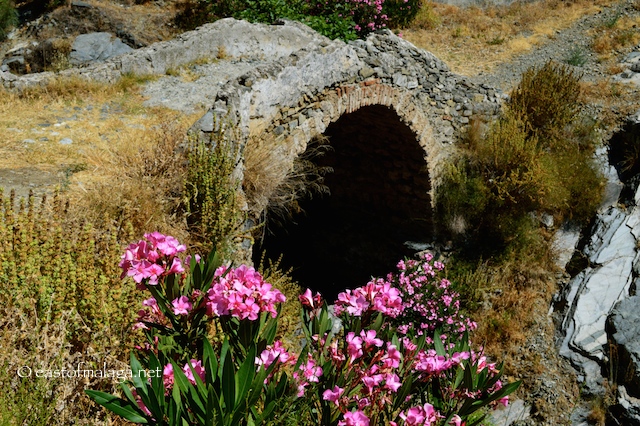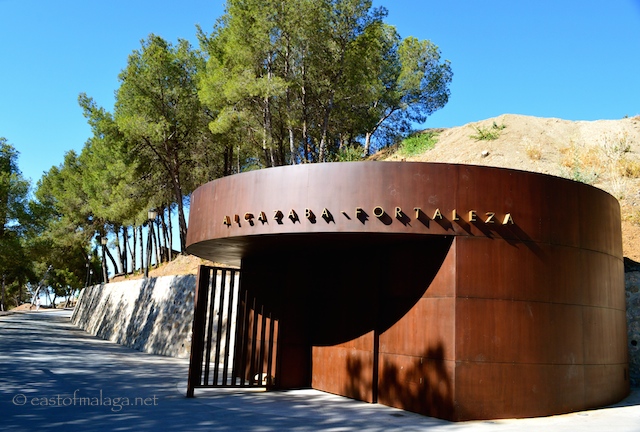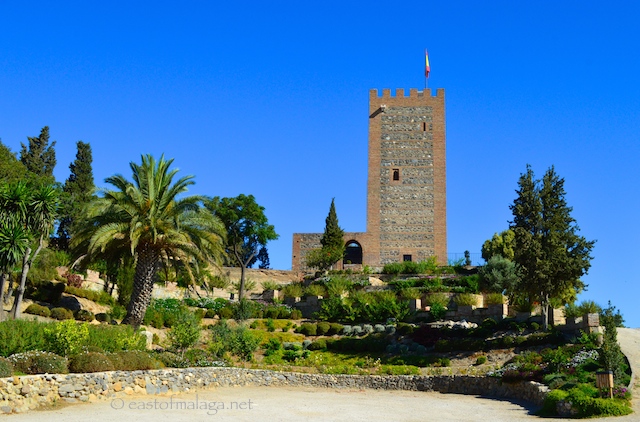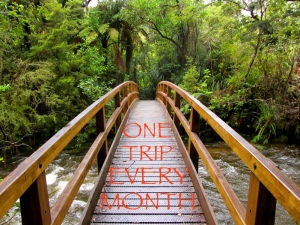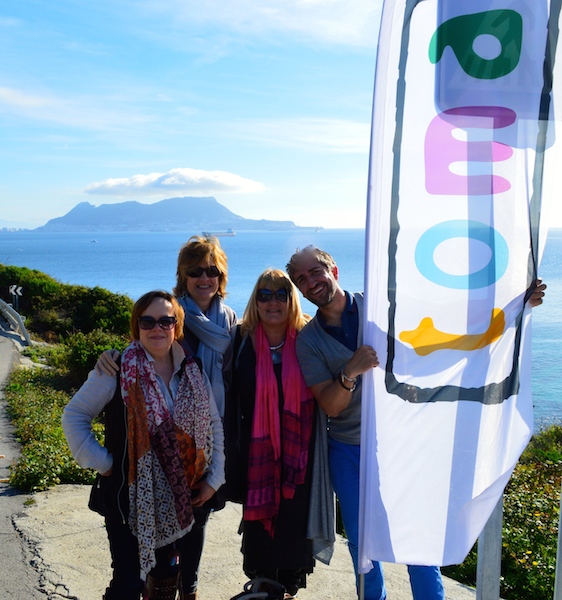 If you thought that this part of Spain was all about white villages, a visit to Andalucia’s very own Jurassic Park – El Torcal Nature Reserve near Antequera, will soon change your mind.
If you thought that this part of Spain was all about white villages, a visit to Andalucia’s very own Jurassic Park – El Torcal Nature Reserve near Antequera, will soon change your mind.
Situated around thirty kilometres north of the city of Málaga, and near the geographical centre of Málaga province, El Torcal is one of the most spectacular natural landscapes in Spain.  The area is well-known for its unusual limestone rock formations which had their origin under the sea around 150 million years ago, during the Jurassic period. In time, immense pressure caused by movement of the Earth’s tectonic plates forced the seabed to rise to an altitude of more than 1300 metres, forming one of the most striking karst landscapes in the whole of Europe.
The area is well-known for its unusual limestone rock formations which had their origin under the sea around 150 million years ago, during the Jurassic period. In time, immense pressure caused by movement of the Earth’s tectonic plates forced the seabed to rise to an altitude of more than 1300 metres, forming one of the most striking karst landscapes in the whole of Europe.
The grey limestone has been shaped by a peculiar erosive process known as karstic moulding, which is the name given to the chemical reaction on the soluble limestone rock by carbon dioxide in rainwater and ice.  But you don’t need to be a geologist to appreciate that El Torcal offers a wonderland of limestone structures, rock towers and cliffs with caves, galleries and alleys thrown in. Even the road up to the Nature Reserve makes for an impressive ride, but nothing can prepare you for your first sight of El Torcal.
But you don’t need to be a geologist to appreciate that El Torcal offers a wonderland of limestone structures, rock towers and cliffs with caves, galleries and alleys thrown in. Even the road up to the Nature Reserve makes for an impressive ride, but nothing can prepare you for your first sight of El Torcal.
You might think that because of the altitude there would be little vegetation, but nature lovers will be in their element. Unsurprisingly there are many types of rock plant, which flourish in the cracks between the rocks, but there are many other interesting plant species including numerous varieties of wild orchid, saxifrage, peonies, wild lilies and roses.
If wildlife is your thing, then look out for geckos, lizards, snakes, wild goats, cattle and many small mammals such as moles, dormice or rabbits. Don’t forget to keep scanning the skies for golden eagles, griffon vultures and kestrels circling overhead.  Entry is free to El Torcal Nature Reserve and, with no specific opening or closing hours, the park is open to the public anytime. The visitor centre has regular limited opening hours, depending on the time of year, and facilities which include a cafe, gift shop, information desk, exhibition/film area, clean toilets and plenty of free parking.
Entry is free to El Torcal Nature Reserve and, with no specific opening or closing hours, the park is open to the public anytime. The visitor centre has regular limited opening hours, depending on the time of year, and facilities which include a cafe, gift shop, information desk, exhibition/film area, clean toilets and plenty of free parking.
Even if you have reduced mobility, the road to El Torcal is worth the ride. There is a ramp up to the visitor centre and the viewpoint, “Mirador Las Ventanillas” is only 100 metres away and has level access. From here you can enjoy a stunning view of the town of Villanueva de la Concepción, the Río Campanillas area, Málaga and, on clear days, you can see the mountains of Morocco, on the African continent.  From the visitor centre there is a circular, self-guided route, marked with wooden posts which will take you about an hour to complete. For longer routes you need to hire the services of an experienced guide, which can be arranged through the visitor centre.
From the visitor centre there is a circular, self-guided route, marked with wooden posts which will take you about an hour to complete. For longer routes you need to hire the services of an experienced guide, which can be arranged through the visitor centre.
The paths are not made up, but are simply worn by the feet of humans and animals. You’ll need to pick your way carefully between the rocks or risk a sprained ankle, especially if it has been raining and the rocks are slippery. Sturdy footwear is required and, although you don’t need hiking boots, flip-flops are not suitable.
It’s advisable not to deviate from the paths as it’s easy to get disorientated.  In the summer months the rocks get very hot, radiating their heat so you should take sunscreen, a hat and plenty of water. During the rest of year, the weather at El Torcal can be cold (well, it is more than 1300 metres) so it’s best to take an extra layer of clothing for warmth.
In the summer months the rocks get very hot, radiating their heat so you should take sunscreen, a hat and plenty of water. During the rest of year, the weather at El Torcal can be cold (well, it is more than 1300 metres) so it’s best to take an extra layer of clothing for warmth.
There’s no doubt that the weather conditions will determine your experience, so you might have to be prepared to return on another day.
As you might imagine, the area can get very crowded during the daytime with coaches full of tourists, so if you are a photographer, an early morning or evening visit away from the well-trodden path makes for magical photographs.
We took a 3-4 hour guided tour in the Nature Reserve with David, a knowledgeable local guide with SenderoSurAventura, who skipped along the paths like a mountain goat. He pointed out many Ammonite fossils (hard-shelled sea creatures that lived more than 200 million years ago) along the way, as well as leading us to areas and enigmatic formations that we would never have found for ourselves.
Popular imagination has defined many of the strange shapes, which have been given such names as El Tornillo (the Screw), Los Cuchillos (The Knives), La Mano (the Hand) and El Sombrerillo (the Little Hat). 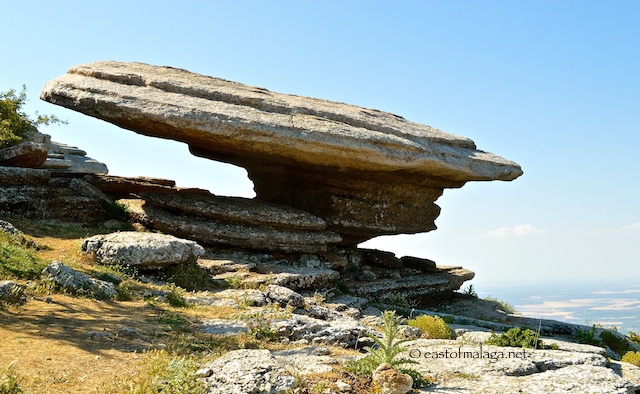 Early humans and neanderthals inhabited this area for thousands of years and there is evidence that they lived in some of the caves within El Torcal. But this should come as no surprise given the proximity to the ancient dolmens in Antequera and the best-preserved remains of Neanderthal man ever found in Western Europe, in a cave near to the Zafarraya Pass.
Early humans and neanderthals inhabited this area for thousands of years and there is evidence that they lived in some of the caves within El Torcal. But this should come as no surprise given the proximity to the ancient dolmens in Antequera and the best-preserved remains of Neanderthal man ever found in Western Europe, in a cave near to the Zafarraya Pass.












